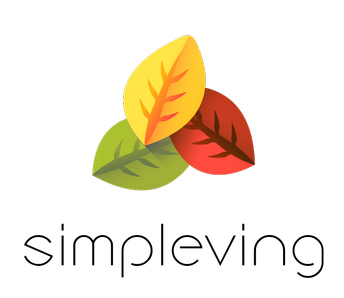Zero waste living was not a new concept to the world and so did I. But, I had not thought of any particular approach until I think of one easy step, waste reduction.
I thought of implementing reduced wastage in sustainable living first. Wastage reduction is a crucial step in sustainable living as it allows a user to find and calculate the damage they do to the environment.
These are the steps I followed to reduce the wastage.
The Three R’s
I discovered that the three R’s is the best way to reduce wastage. According to the same concept, I had to implement and promote the Reduce, Reusing, and recycling.
Recently, I decided to reduce the wastage I produced. In that, I reduced purchasing products that come with many packaging stuff.
While I was practicing this, I could find out some brands that deliver their products according to sustainable living promotion. Also, the use of using reusable bags and containers, and avoiding single-use items like disposable plates, cups, and utensils were the other steps I took.
When it comes to reusing, I decided not to dump my old clothes and take them to clear purposes, use glass bottles to store things, and take partially used boos to write. When implementing recycling, I took part in online programs to get educated. I learned that purchasing from brands promotes recycling.
I created a Compost Pit
I discovered that picking up a location and creating a composting pit is a great way to deal with waste reduction. This is how I followed certain steps to create a composting and dump my waste. In return, I could get compost for my plants.
I Purchase From Brands That Recycle Wastage
I realized that there are specific brands in the market that promote Waste reduction. I followed the simple steps to do that.
- First I did a small Research: Before getting into the market, I did research the products I am interested in and found out what materials they are made from, how they are produced, and where they come from.
- I purchased in bulk to reduce the wrapping and packaging materials. Also, I realized that I was cost-effective.
- Then I looked for certifications such as USDA Organic, Fair Trade, and Energy Star, which indicate that those products meet certain environmental and social standards.
- After that, I went looking at the materials they are made from, such as bamboo, organic cotton, or recycled plastic.
I Purchased From Local Brands As Much As Possible
I believe that Buying from local businesses would reduce the carbon footprint of transportation and reduce the wastage coming from transportation.
I Invested in quality rather than going for the price I believed that I could Invest in high-quality, long-lasting products rather than going for lower prices. Although lower quality products have lower prices, they require frequent wastage most of the time.
I Fixed And Repaired Things That I Should Have Dumped
I discovered that Fixing and maintaining what I already had in my possession is an important aspect of sustainable living. Also, I could reduce waste in several ways.
These are the simple steps I followed.
As the first thing, I Learned basic repair skills such as learning how to sew, fix a leaky faucet, or replace a light bulb. I could find several; resources online, such as tutorials and videos,
I started to keep an inventory of the items I own. The inventory consisted of when they were bought, their warranty information, and the service details. This allowed me to keep track of when things needed to be repaired or replaced and go to assistance when needed.
I followed a repair service
There were moments when I could not either repair or fix the things that got broken. On such occasions, I was referring to a repair service in the era. Then I realized that I could save a lot of money from that.
I reefed natural cleaning products and Avoided chemical-based cleaning products. It was an environmentally healthy move and I could avoid wastage at the same time. The products I used were baking soda, vinegar, lemon juice, and essential oils.
Supporting the second-hand market was a good move. I found second-hand items using communities on social media and put my products for a reasonable price. I could get money and fix the items I had intended to dump. Also, I discovered that supporting the reference to the second-hand mark is a great way to find gently used items that can be fixed and reused, instead of buying new items.
I looked into water management
I realized that water is one of the massive ways to cause wastage. When compared to the quantity and the amount, water wastage is the highest for any house. When I looked into my house, I saw that it was way higher than. These are the steps I followed to avoid water wastage.
- As the first step, I Fixed leaks. I ran a Check for leaks in my home and fixed them as soon as possible. Use low-flow fixtures: Install low-flow showerheads, faucets, and toilets to reduce the amount of water used in your home.
- Then I started to add Water during the cooler hours of the day. I wanted to minimize the evaporation and it was a success. I add water to my lawn and garden during the cooler hours of the day. I discovered that the early morning and evening sessions had cooler hours.
- I installed a rainwater collection system to collect and store rainwater for use in my garden. Also, I could use it for other non-potable uses such as cleaning purposes.
- Then I referred to Plant native and drought-tolerant plants. I had already expended most of Plant native and drought-tolerant plants in your garden, which require less water and are better suited to your local climate.
- As the last step, I invested in a smart irrigation system. It was a smart move from me as the system could consider weather data and real-time soil moisture levels. I adjusted the settings to optimize watering and reduce water waste.
I prevented energy Wastage
I understood that energy wastage is one of the most impactful ways to cause energy wastage.
In my house, I could identify 10 ways that wasted energy. This is how I prevented them easily.
- I Turn off lights and electronics when I was not at home
- I was a person who left the lights and other electrical devices as they were when I left home. I installed a smart lock and paired it with other smart home devices such as smart lighting, television, and thermostats. Then I adjusted the setting to turn them off when I locked the door.
- I started to Use energy-efficient appliances and light bulbs
- I had to change the brands which were not friendly with energy saving. In return, I could save energy and reduce the energy wastage wasted as heat, size, and light.
- I tuned up my home to reduce heating and cooling costs using a thermostat. After that, I could save energy that was wasted to cool and heat my home when I was not at home. Also, I paired it with other smart devices for perfection.
- I was driving to my office daily. I decided to Use public transportation, carpool, or bike instead of driving alone as it consumed more energy.
- I discovered that my house had been located with an exposed posture. Lots of energy was wasted due to exposure to the sun. I Planted trees and install shading devices to block the sun’s rays and reduce cooling costs.
- I discovered that the adaptors, chargers, and cables would cost some energy even if they are not in use. Therefore, I Unplugged chargers and appliances when they were not in use.
- The Use of a clothesline or drying rack instead of a clothes dryer was one of my decisions. It could save energy wasted as I did not have to use electricity to power the clothing dryer.
- Among the electric devices that consumed lots of energy, the refrigerator was at the top of the list. Since I had not chosen the optimum temperature, I had to dump perishable items as waste. I set appropriate temperatures for the refrigerator and freezer.
Conclusion
I have mentioned the steps I could use to reduce the wastage. If you have anything to clarify, please contact us.



3 Comments